Osteochondrosis of the lumbar spine is characterized by dystrophic damage of the above-mentioned part of the lumbar spine, damage to the nucleus of the intervertebral discs and deformity of the intervertebral joints against the background of damage to the ligament apparatus. In the later stages of the disease, the vascular and even the nervous system are involved in this pathological process.
What is lumbar osteochondrosis?
Lumbar lumbar osteochondrosis is one of the most common diseases of the musculoskeletal system in the world. Irregular pain syndromes in the designated area are felt in up to sixty percent of the population, and one in ten residents is diagnosed with osteochondrosis in one way or another, and almost half of the cases are associated with the defeat of the lumbar and sacral regions.
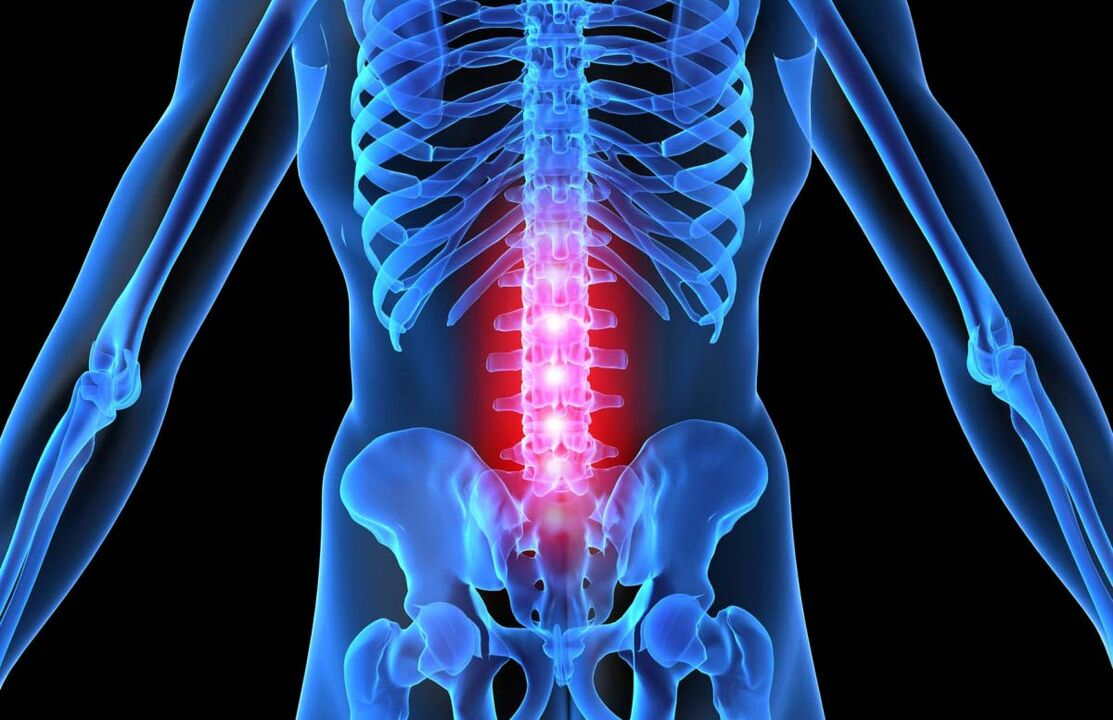
The disease rapidly "rejuvenates" and sometimes occurs even in adolescents and children - it is the fault of a sedentary lifestyle / work, as well as excessive passion for computer games, lack of full physical activity - sports and active games are replaced. Stay on the PC for a long time.
However, lumbar osteochondrosis can occur due to excessive stress, especially when aggravated by excess weight. The problem is caused by improper posture, back injuries, non-compliance with the daily routine and systematic nutrition.
Negative factors that accelerate the formation of the initial conditions for the emergence of this type of osteochondrosis are chronic lack of sleep, stress, slowing of metabolic processes in the body. A separate category is professional athletes.
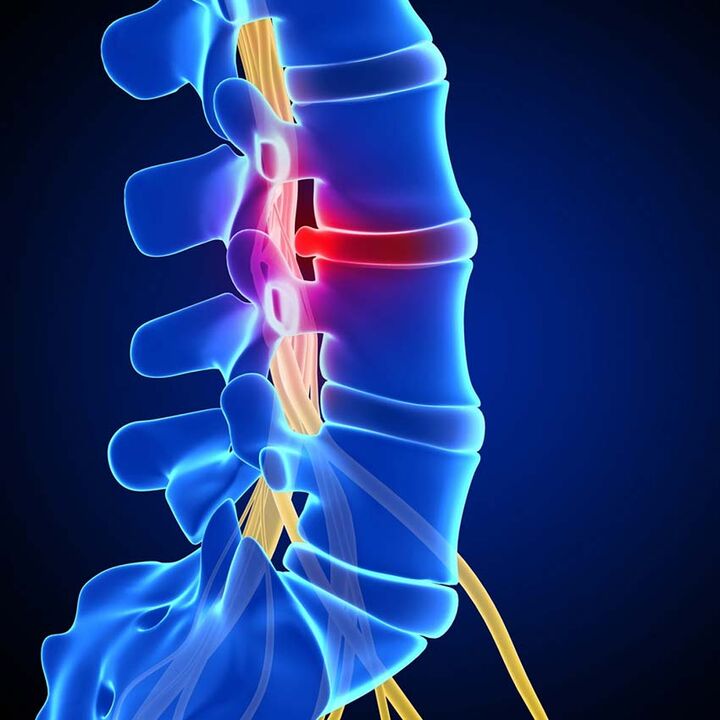
Some experts point out that in some cases, osteochondrosis is a result of a person's genetic predisposition: the intervertebral discs also have a loose porous structure, and the pathogen is destroyed very quickly under the influence of adverse factors, the disease progresses. It is diagnosed quickly and only late, sometimes in irreversible stages.
A special risk group is people suffering from rheumatoid arthritis, as well as ankylosing spondylitis, which complicates the course of the above-mentioned autoimmune disease.
The first signs. Symptoms of lumbar osteochondrosis
The main symptoms of the disease described above are, of course, pain syndrome. Prolonged pain in the lower back in moderate severity can be replaced by intense "lumbago" after active physical labor or in a restless state. As a rule, the pain syndrome in the supine position is practically invisible or disappears completely.
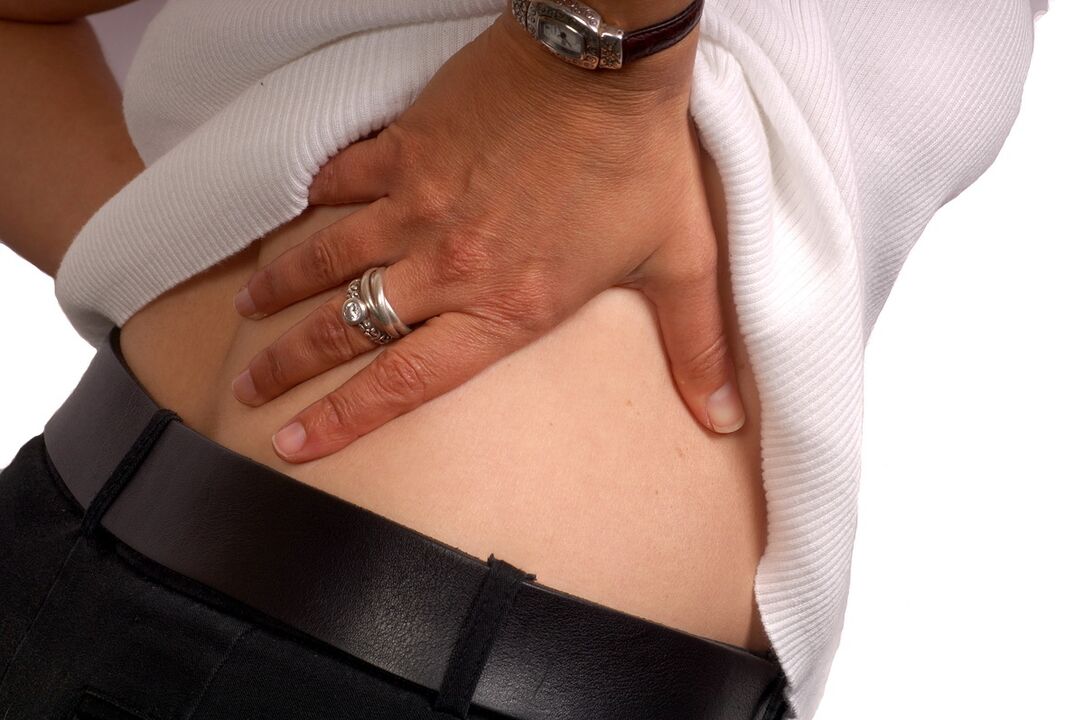
Along with an inflammation, pain syndrome with heavy physical force, hypothermia or non-physiological movements loses its localization in the lumbar region and spreads to the pelvic region and even the legs.
In detail, the patient develops the following pathologies:
Compression of nerve roots
- L 1-2 lesions of roots: pain in localizations, loss of internal sensation in the thigh and groin.
- L-5 lesion: back pain in the lower back, radiation to the thumb.
- Lesion S-1: pain and numbness on the outer surface of the thigh, foot, temporary disappearance of reflexes in the sole and lower leg.
Arterial lesion
Causes local damage to the DH artery:
- Regular alignment of the lower leg / hip.
- Loss of sensitivity in the genital area.
- Rarely, loss of pelvic motor function.
Vascular compression ischemia
Disruption of blood supply to the spinal cord and additional peripheral structures leads to "thinning" of the structure of the intervertebral discs and, therefore, abnormal mobility of the spine, the formation of osteophytes and neoarthritis.
Compression myelopathy
Narrowing of the spinal canal causes periodic paroxysmal weakness in the extremities, and a painful "lumbar" syndrome in which the back of the thigh is pulled back. Against this background, hypotrophy / hypotension of the gastrocnemius / gluteal muscles, absence of plantar, anal and Achilles reflexes, paresis of the foot develop.
Treatment of lumbar osteochondrosis
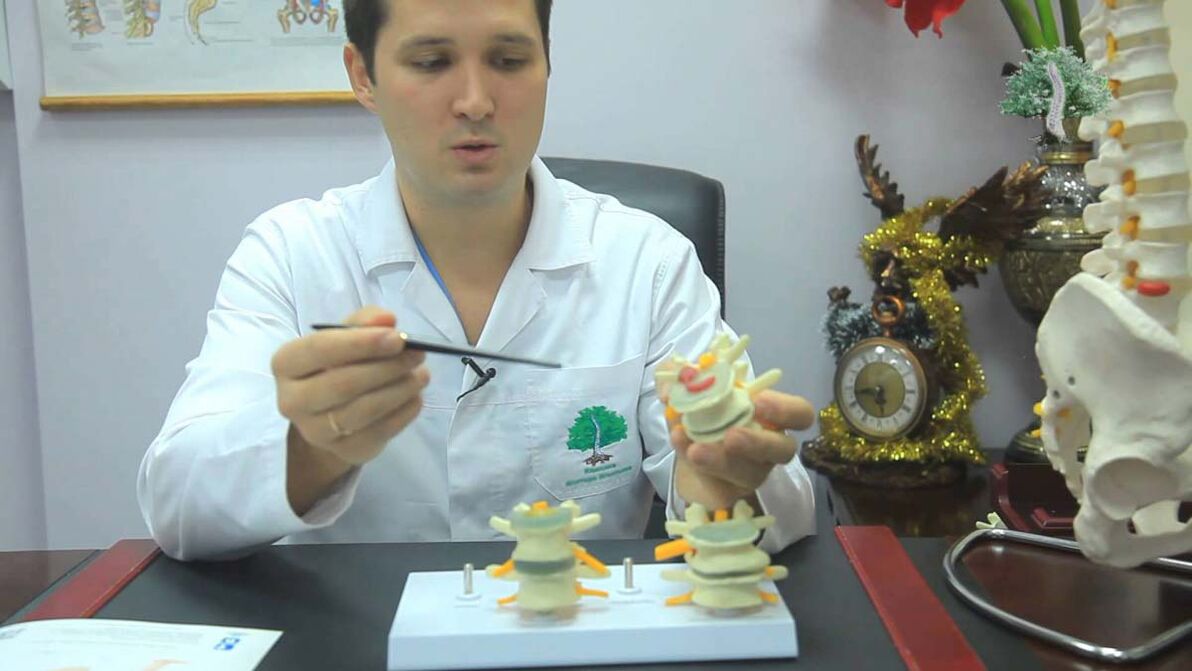
It is possible and necessary to treat the disease. Of course, in this case, only a complex therapy aimed at reducing the symptoms of an autoimmune disease, restoring the structure of the spine and preventing the recurrence of the problem will help.
The complex treatment of the above disease includes:
- Take medicine.
- Blocked needles.
- Gymnastics and exercise therapy.
- Massage and hand therapy.
- Physiotherapy.
Preparations for lumbar osteochondrosis
- Painkillers.
- Restoration of chondroprotectors.
- Vitamins. Optimal - Group B.
- Injections. Anesthetics, cartilage restorers and blood microcirculation normalizers.
- Local funds. Corticosteroids and anti-inflammatory drugs.
Gymnastics for lumbar osteochondrosis
An important element of spinal rehabilitation. All procedures are individually designed to relieve pain and muscle spasms, normalize blood circulation and restore the function of the intervertebral discs.
Massage for lumbar lumbar osteochondrosis
Massage is an indispensable part of the complex treatment of the disease. It helps to both relax and train the back muscles, stimulates the regeneration of cartilage tissue and relieves pain.
Therapeutic, acupressure, apparatus, vacuum and connective tissue massage are often used for the disease described above.
Physiotherapy
Physiotherapy is usually prescribed to patients with lumbar osteochondrosis only in the remission phase of the disease, after the exacerbation of the problem.
Modern and classic techniques:
- Acupuncture. Exposure to acupuncture points on the back with special needles.
- Stretching. A classic method of stretching the spine on a massage couch, performed by a skilled chiropractor.
- Electrophoresis. A non-operative method known since the 1960s that affects areas affected by external problems.
- Traction decompression. Automated spinal stretching in a special medical complex.
- Shock wave therapy. Use of infrared waves for the treatment of osteochondrosis.
- Osteopathy. A complex technique that combines elements of chiropractic, massage and therapeutic orthopedics.
- Magnetopuncture. The direct effect of an alternating magnetic field on the spine.
- Laser puncture. Treatment of acupuncture points with needle radiation.
- Electrical stimulation. Use of small alternating currents in affected areas.
Prevention of lumbar osteochondrosis
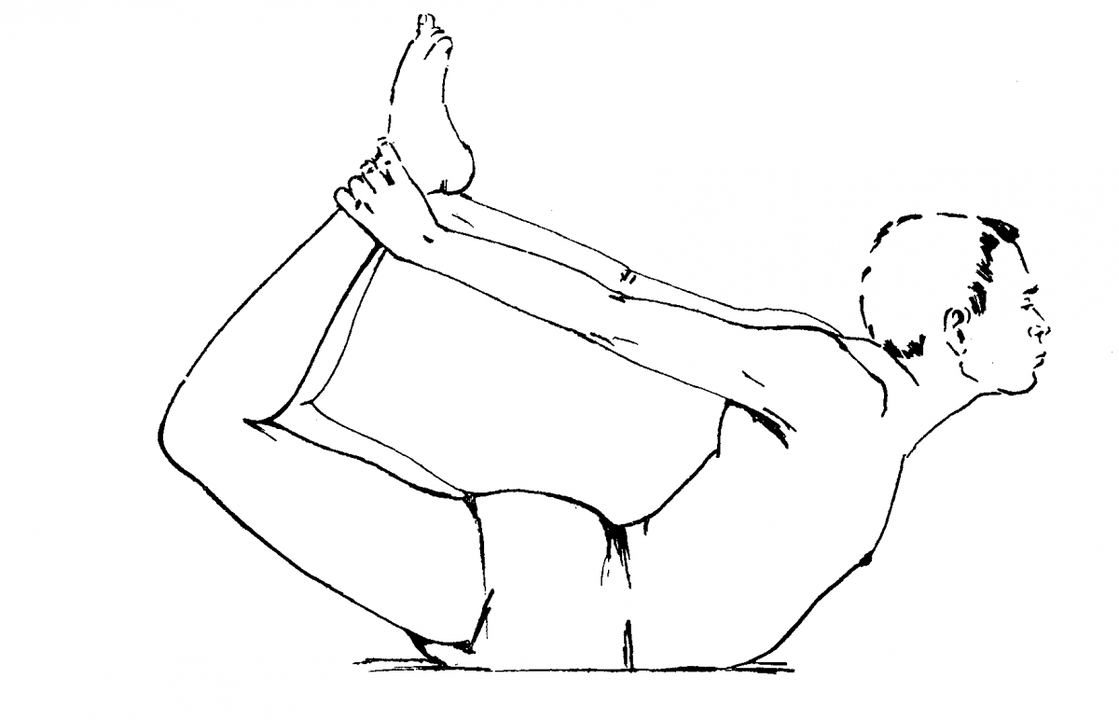
After a complex treatment and physiotherapy, long-term supportive therapy is required: during this period, the spine is still weak and requires support. In addition, prevention aims to prevent the development of lumbar osteochondrosis. Main activities:
- Regularly balanced exercise, preferably under the supervision of a qualified pediatrician.
- Normalization of body weight: often an overweight person is an aggravating factor that contributes to the development of osteochondrosis.
- Dietary adjustment. A regular diet should include foods rich in elements such as calcium and magnesium. In this case, it is worth excluding very fatty and unhealthy foods and other foods that are not included in the concept of healthy food.
- Give up bad habits. Alcohol and smoking intensify all the destructive processes in the body, including osteochondrosis.
- Proper posture. Be sure to monitor your posture, especially if your work is constantly on the computer or other sitting activity. Pay attention to your child - how and how much he sits. Normal posture will prevent the appearance of scoliosis and therefore osteochondrosis in the future.
- Avoid wearing weights regularly by using the right shoes, clothes and accessories. The wrong shoes, a heavy bag on the shoulder, work as a loader - all these factors sometimes have a decisive impact on the onset of destructive processes in the spine.
Question and answer
What kind of pain occurs with this type of osteochondrosis?
Lumbar lumbar osteochondrosis is characterized by several types of pain. First of all, it is a local discomfort that lasts for a long time in the lumbar region and increases significantly with an increase in motor activity and physical labor of a person. This pain disappears when the body is given a horizontal position for at least 15-20 minutes.
If the disease is exacerbated by hypothermia, prolonged severe physiological stress, or sharp "perpetual" movements, in addition to the aforementioned back pain, there is a "shooting" effect that is localized in the pelvic region and spreads downward. extremities.
Is gymnastics useful for this osteochondrosis?
Therapeutic exercise therapy gymnastics allows to enhance the good effect of complex treatment of the disease, partially develop the intervertebral components of the joints and relax / train the muscles in the lumbar region. In addition, regular massage helps to get rid of the unpleasant pain associated with osteochondrosis.
A specific set and list of exercises, number of approaches and frequency of exercises are prepared by the attending physician for you: recommend the current stage of the disease, a list of possible contraindications and limitations, the patient's condition and methods of practical use of exercise therapy.

























